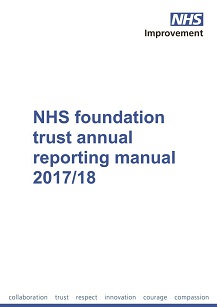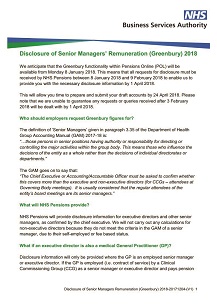Updated accounting guidance amounts to minimal changes for 2017/18
For those who like to skip to the last page to find how it all turns out, the real news is that 2017/18 is a year of little change.
The Department of Health (or Health and Social Care to give it its new expanded title) did issue additional guidance alongside the GAM, including eight FAQs, six of which apply to all NHS bodies. However, there were no surprises.
The FAQs that will have the biggest impact deal with statutory changes that occurred in April 2017. The first (FAQ 3) covers accounting for the apprenticeship levy. The Treasury has determined that the levy will be treated as a tax and, therefore, payment of the levy must be recognised as an additional social security cost as it arises. It cannot be treated as a prepayment.
Accounting for the benefits arising from the use of the digital account will depend on whether the NHS body is a training provider or not. For non-training providers, the amount of employees’ training funded by the levy will be recognised as a non-cash expense in the period that the training occurs. This is matched by non-cash grant income. 
For those NHS bodies providing the training themselves, receipt of cash from the digital account will be treated as grant income. Expenditure incurred in delivering the training is accounted for in the usual way.
FAQ 8 deals with reporting off-payroll engagements. Officially, this FAQ does not apply to NHS foundation trusts as the guidance is included in chapter two of the GAM, which is not applicable to them. However, NHS Improvement will issue an amendment to the ARM soon and it is unlikely to be very different to FAQ 8.
As expected, the Treasury’s reporting requirements have been amended to reflect the change in the off-payroll (IR 35) legislation from April 2017. In addition, the threshold for engagements that must be reported has been increased from £220 a day to £245 a day.
Of the three tables that still need to be completed for off-payroll engagements, tables 1 and 3 will be familiar.
Table 2 requires that the number of new off-payroll engagements entered into in 2017/18, or those that reached six months in duration during 2017/18, are disclosed (split between whether they fall under the remit of IR35 or not). These must be shown along with the number engaged directly and on the payroll, the number that have been reassessed for consistency/assurance during the year and the number that have changed status as a result of that review.
FAQs 1 and 2 provide annual updates on discount rates for provisions and post-employment benefits, as well as the probability of non-recovery of injury cost recovery revenue. FAQ 6 simply tidies up the manual by removing a reference to guidance that is no longer available.
Two other FAQs (4 and 5) will have an effect on limited numbers of organisations. There is new guidance for newly formed NHS foundation trusts and NHS trusts, while the guidance on how to deal with a change in statutory status is retained. NHS trusts have new guidance on reporting against financial duties and targets. Supplementary guidance on how the statutory break-even duty applies to NHS trusts will be issued later.
Finally, FAQ 7 updates the GAM to reflect changes made to the Treasury’s Financial reporting manual (FReM). Some of these will require changes to the annual report of all non-NHS foundation trust bodies.
For NHS foundation trusts, the annual reporting guidance in the ARM has also been amended to reflect the changes made to the Treasury’s FReM. In addition, the requirement in Managing public money to report fees and charges has been reflected in the ARM.
Related content
The Institute’s annual costing conference provides the NHS with the latest developments and guidance in NHS costing.
The value masterclass shares examples of organisations and systems that have pursued a value-driven approach and the results they have achieved.